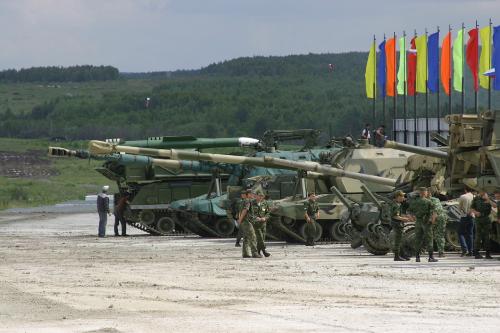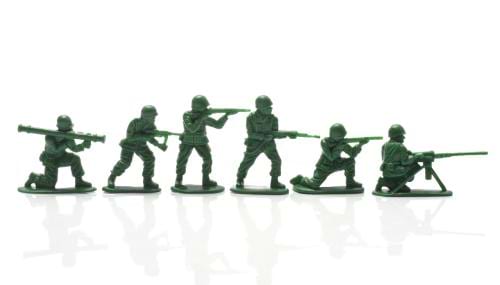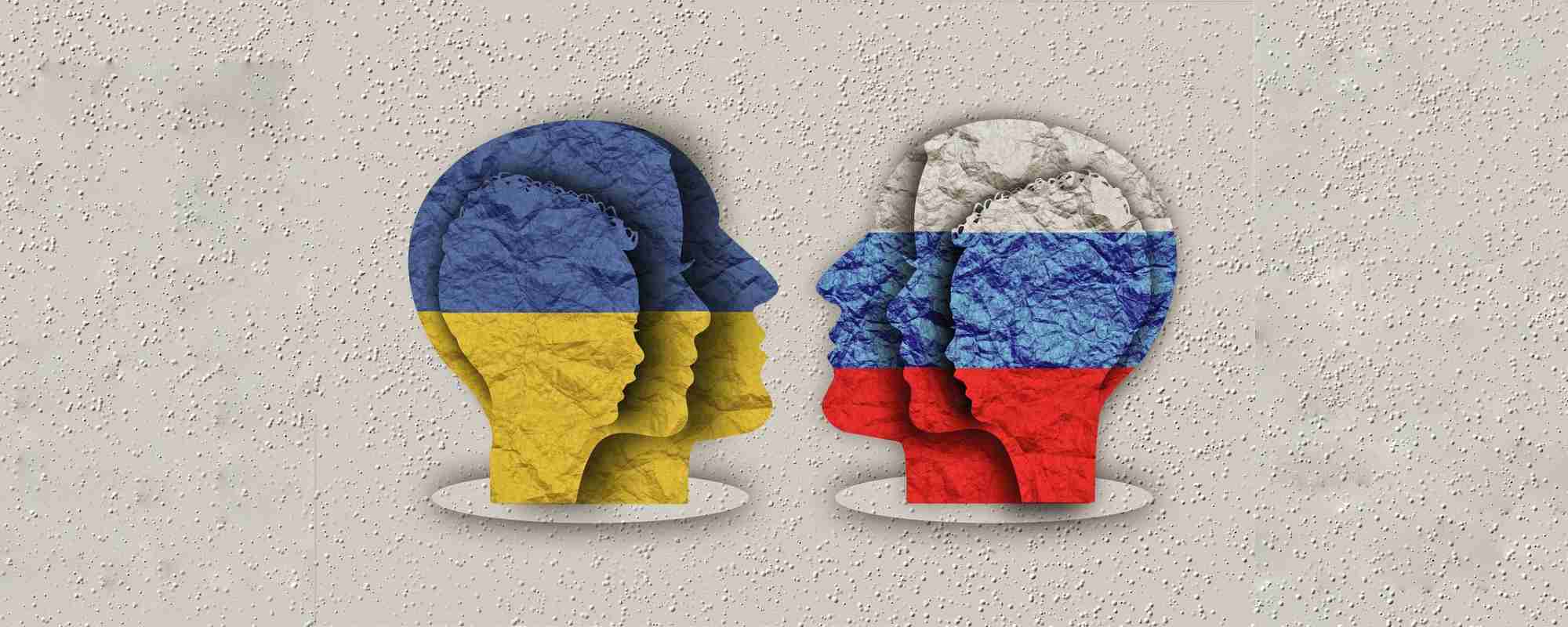Russia’s regime is conducting two wars, one to subjugate Ukraine, and another to subjugate its own military. In Part 1 of this article, Jonathan Firbank recounts ways Russia has compromised the morale of its forces and UM strategy expert, Dr Valentina Cassar, explains their broader implications. Part 2 can be found here.
When I wrote my previous article on Russia’s invasion of Ukraine, the death of 10,000 Russian troops seemed staggeringly high for such a short period. For some perspective: The Soviet Union’s self-destructive 10-year invasion of Afghanistan claimed 15,000. The U.S.’s 20-year invasion of Afghanistan claimed 2,400. Please hold those numbers in your head when you consider that some suggest that Russia currently has over 300,000 dead, or at least that many dead and wounded. Estimating deaths during war is challenging; primary sources tend to be military, therefore biased, and soldiers often overreport enemy casualties. However, this staggering number is becoming ever more likely—Russia’s death toll is accelerating, having recently concluded its most costly offensive so far. This number is not just a consequence of Ukrainian military accomplishments, it is a consequence of Russia’s systemic neglect, abuse, and misuse of its own servicemen. Dr Valentina Cassar speaks about how this moral and morale crisis may impact Russia’s war.
Dr Cassar belongs to UM’s Department of International Relations. Her specialities include strategic studies and strategic cultures, Russian and U.S. foreign and security policies, European Security and Defence, and Nuclear Politics. Each subject is highly pertinent to the war in Ukraine. Dr Cassar refers to Hans Morgenthau’s “components of national power”: ‘The ability to project power, influence, and achieve political economic and security objectives relies on variables including geography, natural resources, and industrial capacity.’ But Cassar believes a more crucial component, especially in war, may be ‘the ability of a government to utilise and maximise these features. This depends on other features discussed by Morgenthau; military preparedness, the character of its leadership, and the quantity and quality of its armed forces. These in turn are determined by population size, demographic trends, national character and morale, and the quality of government.’ Military success ‘does not depend on military capabilities alone, but also on support and conviction for its objectives.’ This includes ‘support from the broader population, but more importantly from within the military services—as well as their families—those whose lives are most directly impacted.’
Since the aforementioned previous article, the conditions that Russian servicemen have experienced have become dramatically worse. In 2022, it was shocking that Russian conscripts had been lied to, and dragged into Ukrainian territory without understanding they were at war. Now, as 2024 dawns, it has become common practice to drive Russian conscripts in so-called “meat waves” into enemy fire, to better locate its source. My previous article identified Kadyrov and Wagner as “terror troops,” accurately assuming that they would inflict atrocities on Ukrainians. I didn’t, however, assume that they would be inflicting atrocities on Russians as well. Kadyrov’s Chechens would become barrier troops, killing front-line Russians who retreated. Prighozhin’s Wagner Mercenaries would employ penal troops, forcing prisoner conscripts into suicidal assaults and baiting actions. My previous article documented torture, rape, and executions of Ukrainian civilians. Two years later, it is irrefutable that Russian servicemen have also been tortured, raped, and executed by their own people, a systematic problem evidenced by vast amounts of new video footage taken by servicemen.

Cassar continues: ‘The status and quality of the military depend on morale.’ This ‘in turn stems from both support for the military objective but also preparedness, adequate training, and access to necessary resources. Naturally, the adverse can be said to be true, whereby inadequate preparedness, training, and resources will erode the ability and morale to fight effectively.’ Russia’s conscripts are unprepared and untrained to an extreme, whether from a prison or a recruitment centre. There are several examples of conscripts being abandoned to die en masse in particularly dangerous parts of the front, with their relatives claiming they were left without weapons. More importantly, conscripts are without proper medical equipment. Recruits have been told to buy tampons to plug their wounds to staunch bleeding. Basic medical equipment, and even basic winter coats and tents, are cheap and accessible, even for Russia’s sanctioned economy. Deals with other states for high-profile military assets prove Russia has resources. Yet, while schematics for drones and mountains of artillery shells are bought and paid for by the state, Russian soldiers must buy or crowdsource their basic supplies. Those who can’t often die of hypothermia before seeing combat. Soldiers are instructed to commit suicide rather than surrender. This spares Russia the political impact of them experiencing better conditions in Ukrainian hands, then bringing those stories home once a prisoner exchange takes place.
These are just a few examples of the broader tapestry of Russian military incompetence, which has stymied their invasion from the start and sabotaged their warfare for centuries. As Cassar explains, morale problems from incidents such as these spread through word of mouth. ‘There have been multiple reports regarding performance and struggling morale within the military. Inadequate preparedness has also meant that the military is dissatisfied with carrying out their efforts; there have been several news items featuring soldiers on the frontlines lamenting about their conditions to family members back home.’ Russia’s reliance ‘on partial mobilisation and conscription’ is not changing and ‘the age requirements for mobilisation were also raised. Likewise, the average age of Russian troops is also increasing, which is indicative of a population that is less prepared for war.’
Cassar observes that Russia is not alone in this. Ukraine is also dependent on conscription and the age of their soldiers is increasing over time (although Ukraine’s statistics are impacted by conscription exemptions for students). This will certainly have far-reaching consequences for their war effort. The distinction between the two armies is in the ethos and procedure of how that conscription is implemented. Ukraine, with its smaller population, must treat the lives of its soldiers as a precious resource, must invest in training, and must maintain a good reputation with vital allies. Russia, conversely, has learned the wrong lessons from history, fighting as though victory comes from a disregard for Russian life, instead of in spite of it.

The result is, as Cassar explains, a worse ‘quality of troops, with reports that unorthodox measures are relied on.’ These include reports of ‘troops charged with desertion being given suspended sentences and redeployed, and reports of Ukrainian PoWs being deployed’ by Russia. ‘Challenges with recruitment, retention, prolonged deployment, and insufficient rest have also raised concern over combat stress, fatigue, and other mental health issues for Russian soldiers. Dara Massicot has drawn parallels between the fatigue and PTSD endured following Russia’s wars in Afghanistan and Chechnya, and warned of the prospective emergence of “Ukraine Syndrome,” which could directly impact far more people given the massive scale of the war in Ukraine. Cassar continues: ‘We may try to draw insight from the events of 1991 and the subsequent collapse of the Soviet Union by considering the impact that its war in Afghanistan had on its military overstretch, and subsequently on its economy and politics. The war also had negative effects on the mental health and well-being of Russian soldiers.’ The golden question, one that Ukraine may depend on, is whether the greater psychological fallout of Russia’s new invasion will again be enough to affect political change inside Moscow.
An End to Two Wars
Far from the high of their military victories in early 2023, Ukraine is facing a grim 2024. Cassar observes that ‘the war in Ukraine is developing into a protracted conflict. An end to the current scenario does not appear too close for several reasons. The prospect of victory for either side appears limited.’ As Cassar states, the front line has ground into ‘a situation of stalemate,’ a perspective that Ukraine’s former military commander-in-chief, General Zaluzny, shares. Russia has stalled Ukraine’s counterattack through ecocide by flooding Kherson Oblast and creating the largest, densest minefields to ever exist, which currently cover land six times larger than Belgium. Conversely, Russia’s “meat wave” assaults are largely ineffective, evaporating Russia’s manpower and any material sent to support it. But this is by no means a frozen conflict. As we’ve seen since the start of Russia’s invasion, the war harbours potential for radical change. Though land is changing hands in lesser quantities and at a lesser pace, there is likely some aspect of this war happening right now that will decide how it ends. One possibility is that Russia’s adversarial treatment of its forces will create the conditions needed for Ukrainian victory—a compelling possibility, as it already nearly happened when Prighozhin’s Wagner mercenaries turned against Moscow.
Russia may miscalculate the abuse of its servicemen so badly that they overthrow their regime, or inspire others to do so, an echo of the Bolshevik revolution and other uprisings that germinated amidst similarly costly Russian wars. As Cassar states, ‘Putin himself alluded to 1917, in his reaction to the mutiny, and indirectly warned of the collapse of the regime. Analysts such as Vladislav Zubok draw comparisons with the uprisings and consequences during the 1600s.’
But an uprising does not necessarily mean the war will end. Cassar argues that ‘as to whether an end’ to the Ukraine war ‘is contingent on an internal collapse of Putin’s regime, much would depend on what the subsequent regime would look like. We should keep in mind that the Soviet Union experienced several leadership changes during the Cold War, where even if there was criticism for predecessors and shifts in tone, the broader international posture was retained.’
‘Furthermore,’ Cassar continues, ‘a change in leadership and regime may also bring with it transitional challenges and instability, as we saw both in Russia in the past, as well as within other countries that have experienced regime change,’ a possibility that worries Ukraine’s allies far more than it worries Ukraine. ‘Thus, one cannot take for granted that regime change would result in stability or withdrawal from Ukraine or that a resolution of the conflict requires regime change per se.’ It is vital to retain this realistic perspective when considering future Russian regimes. Having said that, Prighozhin currently provides the best example of a catalyst towards regime collapse, and his example promised an end to the war. Before his capitulation he was transforming himself into a political figure, spreading flyers and hacking TV stations to prime Russia for new ownership. His political platform was, explicitly, that the war had been a costly mistake, born of lies, to the extent that it represented a betrayal of Russia. If even Wagner’s gangster warlord would have been a better alternative to Putin, it seems possible that almost anyone could be.





Comments are closed for this article!